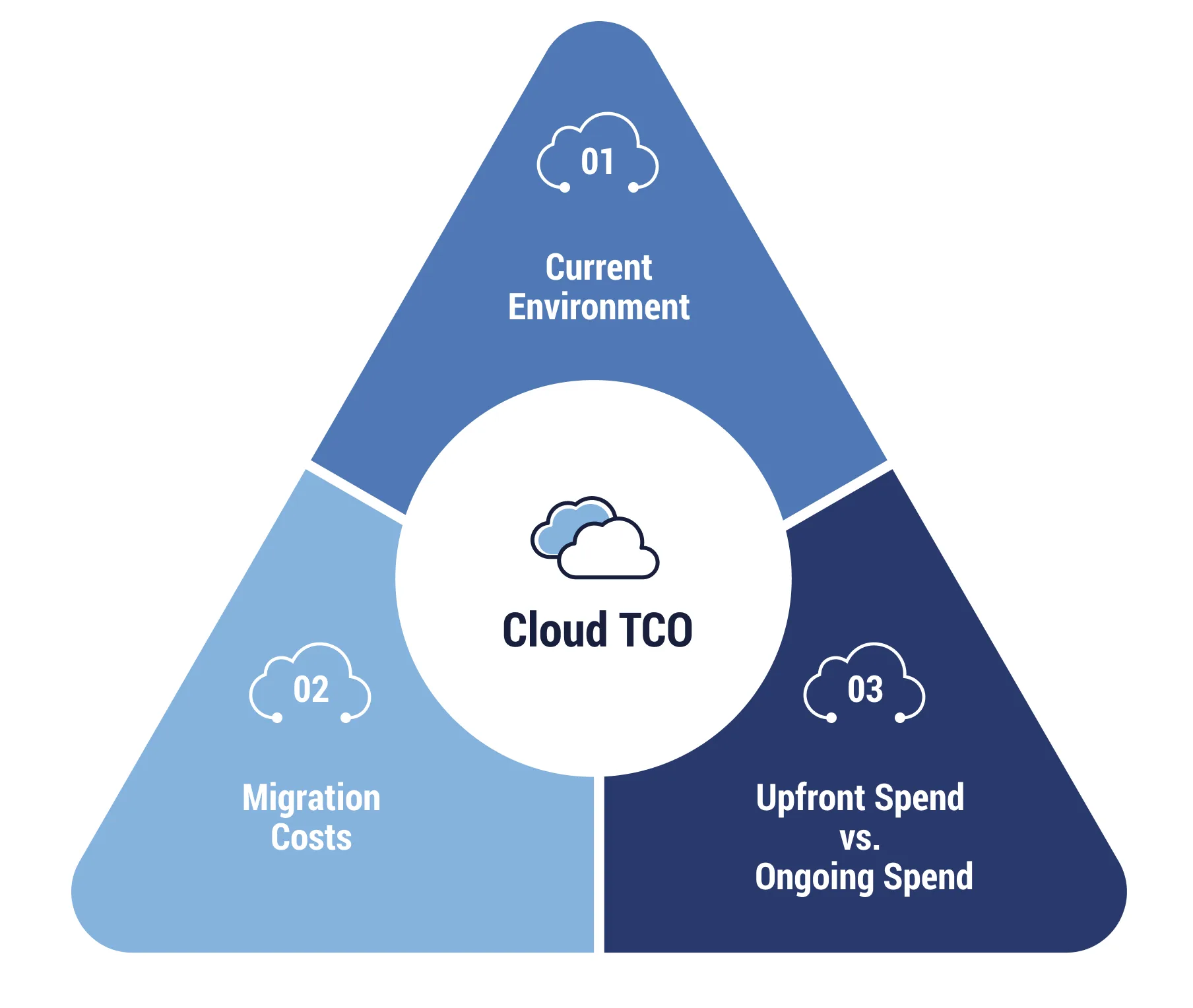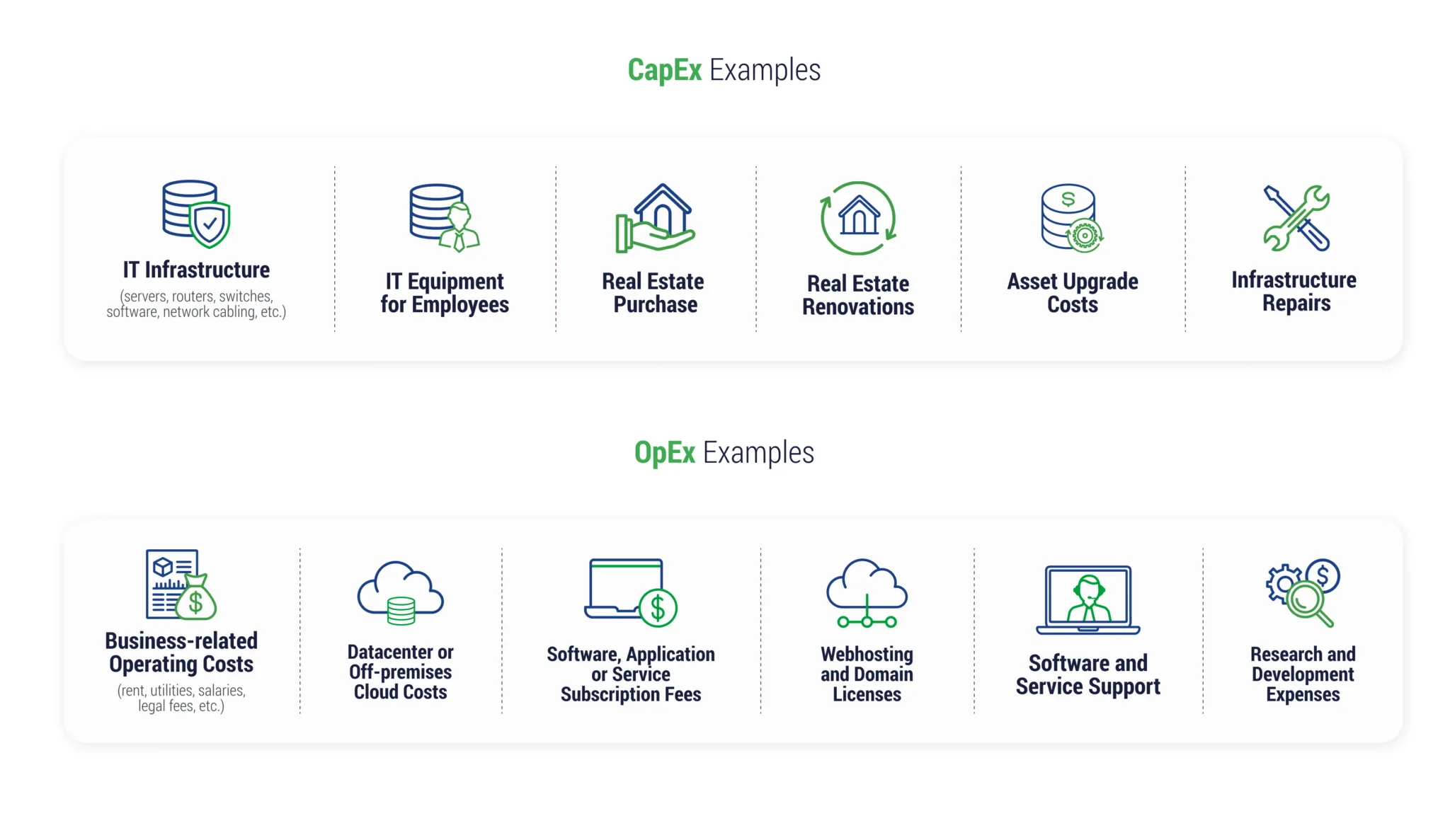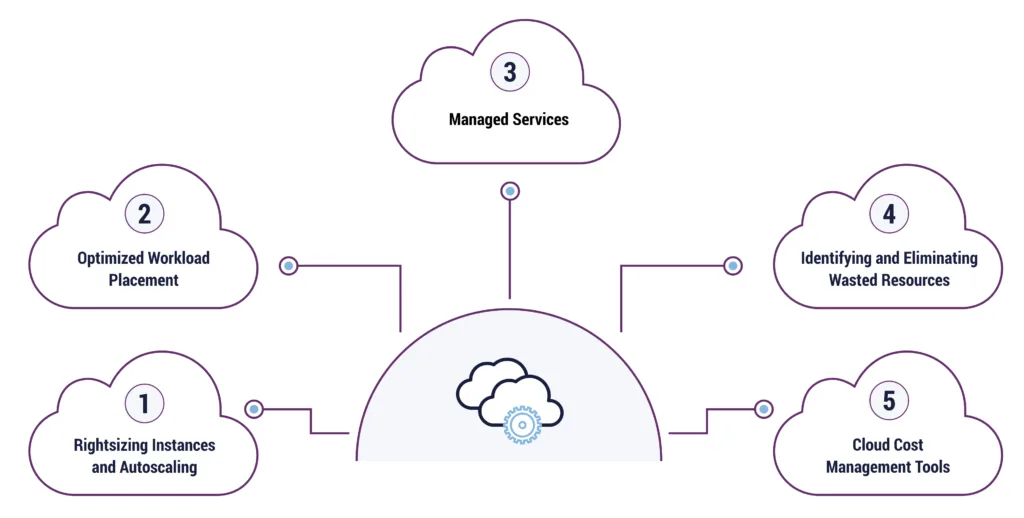
Moving your workloads to the cloud can come with a wide array of improvements. Flexibility, scalability, efficiency, and innovation can all be aided by the cloud. However, if a team isn’t mindful of the resources they’re using, the total cost of cloud computing services can become unmanageable. We’ve compiled an ultimate guide to help you reduce your cloud TCO and build a more cost-effective environment in public cloud.
What is Cloud Total Cost of Ownership (TCO)?
Cloud TCO stands for cloud total cost of ownership. The cost of everything needed for cloud computing services should be included in this total: infrastructure costs, support costs, software licensing, data storage, network bandwidth, and personnel expenses. Any tools or human resources needed to adopt, migrate, operate, manage, and optimize the cloud environment should also be considered in the Cloud TCO.
Why is Cloud TCO Important?
One of the major reasons organizations move their workloads to the cloud is to reduce the costs compared to managing their own on-premises environments. However, if you migrate to the cloud and don’t pay attention to what you’re spending, the anticipated cost-savings can diminish. Calculating cloud TCO before a migration project allows organizations to assess the financial implications of migration and determine if the cloud is the right choice for their specific business needs.
Cloud TCO is also important to understand after you already have a cloud environment. Knowing your cloud TCO can help you make better strategic decisions, make choices between different cloud platforms, and identify opportunities to optimize espenses associated with cloud. Additionally, having a clear understanding of the cloud TCO helps companies proactively manage costs and identify potential areas for optimization, which maximizes the benefits of cloud investments.
15 Factors for Calculating Cloud TCO
When calculating your cloud total cost of ownership, you need to consider your current environment, the costs of migration, and what you might have to spend upfront versus on an ongoing basis to maintain your new environment. All direct and indirect costs should be included in your calculations:

Infrastructure Costs
Start by understanding the costs of your current IT infrastructure. This can include physical servers, other hardware, and any accessories and equipment needed to run your infrastructure. If you’re moving from an on-premise environment to the cloud, you need to factor cloud infrastructure costs, such as virtual machines (VMs), networking, load balancers, etc., into the TCO model as well.
Storage Costs
How much does it currently cost to store your data and workloads? You can use this information to calculate what storage might cost with a public cloud provider. This involves assessing the storage capacity needed, the type of storage (object storage, block storage, etc.) and any associated data transfer costs.
Network Costs
In a cloud TCO model, network costs refers to the expenses associated with operating and maintaining the computer network infrastructure. These costs can include factors like:
- Bandwidth utilization
- Network equipment
- Network monitoring tools
- Data transfer fees
Although network costs are typically included within the pricing package of a cloud service from a cloud provider, it’s crucial to understand exactly how the provider has structured its pricing model for network usage. The TCO for network-related expenses, when compared to an on-premises data center, is typically lower in the cloud due to the economies of scale and shared infrastructure offered by public cloud providers.
Backup and Recovery Costs
With legacy frameworks, the business is responsible for all backup and recovery costs. Backup and recovery might be managed by internal employees or implemented by a third-party vendor. Many, if not all, public cloud providers offer backup and disaster recovery (DR) services which can be baked into the overall pricing for their cloud services or deeper levels may be offered for an additional cost.
Security and Compliance Costs
Security with your current system can include physical security measures, such as keycards and security cameras. It can also entail digital security measures, like firewalls. While you’re likely to still have some security and compliance costs post-migration, most cloud providers meet all common compliance standards and have some security measures in place.
Cloud Migration Costs
Moving to the cloud includes a lot of moving parts, so much so that it requires its own strategy and pricing. While it’s a one-time expense, you’ll want to factor in how much it costs to migrate your workloads to the cloud, including the expenses related to data migration, application re-architecting, and any professional services required during the migration process.
Application migration will also be part of your cloud migration costs. If the application needs to be re-platformed or completely rebuilt from the ground up, this will be a more expensive endeavor than if it’s able to move to the new cloud environment without much development time.
Keep in mind that every migration is unique and there’s always a possibility for unforeseen challenges to arise. However, practices like careful planning, thorough testing, collaboration with experts, effective communication, and working from a well-defined strategy can reduce the likelihood of disruptions. With that, calculating the cost of total switch time should also be done by taking into account potential downtime, labor costs associated with migration, and hours lost.
Sunk Costs
Sunk costs are hard for people to walk away from. It’s easy to feel like you need to hold on to hardware you’ve purchased and stick with other large investments you’ve made versus walking away and choosing a different way of running your workloads. However, this rigidity and desire to stick to what’s already in place can cost you in the long term. As other businesses innovate and modernize their applications and environments, you’re setting yourself up to be behind the curve. Some sunk costs are inevitable in the course of migrating to the cloud.
Operations and Maintenance
When moving to the cloud, much of the tasks associated with hardware management (hardware maintenace, updates, repairs, etc.) is shifted from IT teams to the cloud service provider. However, the cost of personnel to manage and maintain the cloud environment, including cloud architects, administrators, security professionals, and other IT staff, along with training and upskilling of employees, should be considered within the cloud TCO. These items would either need to be handled in-house or outsourced to a third-party or managed services.
Ancillery Services
There are additional solutions and services that, if needed to be purchased, should be accounted for in a cloud TCO model, such as:
- Cloud monitoring and cloud analytics tools
- Security services (SIEM, IAM, data encryption, etc.)
- Compliance services (i.e. certifications, audit controls, data privacy measures, compliance reports)
- Managed services
- AI and machine learning
- Database services
- Developer tools and APIs
Service Level Agreements (SLAs)
Depending on their requirements, organizations may choose higher service levels that require additional costs to ensure availability, performance, and support. For example, organizations with mission-critical applications may opt for higher availability SLAs to decrease downtime and mitigate potential revenue loss. On the other hand, organizations with performance-sensitive workloads, like real-time applications or data-intensive processing, may need SLAs that revolve around higher-performance that focus on ensuring optimal application performance.
Application License Fees
While you may have had application license fees before, in on-premises environments, they’re usually one-time costs. Applications that run in the cloud are typically subscription-based, just like cloud costs. However, keep in mind that application licensing terms and conditions vary among software vendors and cloud providers.
Before migrating applications to the cloud, it’s crucial to carefully review existing software licenses, consult with software vendors, and take into account any specific licensing requirements or options offered by the cloud service provider. Doing so ensures compliance with licensing agreements, optimizes license utilization, and helps avoid sudden licensing issues within the cloud environment.
CapEx Elimination Costs
Cloud migration means you are moving your business, at least in part, from a CapEx model to an OpEx model. Capital expenditures (CapEx) include equipment that you own – your data center infrastructure, for example. With operating expenditures (OpEx), you don’t pay to own equipment. Instead, you pay for what you use. The TCO model for cloud wouldn’t include costs associated with CapEx.
Moving from a CapEx to an OpEx model means that your organization will now have to pay monthly costs to a cloud provider, or other forms of subscription and licensing fees, for the use of service, as well as access to support. One of the outcomes of a cloud migration project is that these monthly cloud costs are often lower than the CapEx costs are when spread out over a number of years.

Cloud Adoption and Increased Agility
If all goes well, cloud adoption should increase organizational agility, scalability, and elasticity, making certain processes more efficient, resulting in:
- Improved performance
- Opportunities for automation
- Better integrations
- The ability to leverage advanced cloud features and services, i.e. AI and machine learning
This internal time saved has true cumulative value, and the better you are able to pinpoint how much time you’ve saved from no longer needing to engage in tedious workflows or engage in repetitive tasks, the more expenses saved should decrease your cloud TCO.
Consulting Costs
Chances are, you don’t have all the in-house expertise needed to complete a cloud migration. Organizations may need to consult with a number of specialists when they move to the cloud, including cybersecurity experts, managed cloud providers, migration pros, and more. These consulting costs need to be included in the cloud TCO.
Project Risk
Embarking on a new project always comes with unforeseen consequences, and that’s all part of project risk. Changes in requirements, unexpected delays, and cost overruns can all be risks that tack on additional costs. While you might not be able to calculate this with a fine degree of accuracy, you may be able to estimate the cost of the potential risk by looking at other, similar projects and speaking to migration experts.
5 Ways to Reduce and Optimize Cloud TCO

Although migrating to the cloud can offer initial cost savings, ongoing cloud cost optimization to reduce spend requires active evaluation and management.
- Rightsizing Instances and Autoscaling: Rightsizing instances ensures that you pay for discounted instances based on your resource needs, avoiding overprovisioning waste. Autoscaling allows you to dynamically adjust resources based on demand, ensuring efficient resource utilization.
- Optimized Workload Placement: Some instances are optimized for certain types of workloads. While some instances are general purpose, others are optimized for memory, compute, or storage. Placing your workloads where they’ll be best optimized can reduce your cloud TCO.
- Managed Services: Managed service providers may feel like an added expense, but working with experts who specialize in optimizing cloud costs can provide a strong return on investment for your business.
- Identifying and Eliminating Wasted Resources: Regularly monitoring your cloud environment allows you to identify underutilized or idle resources. By eliminating these wasted resources, you can optimize costs and ensure efficient resource allocation.
- Cloud Cost Management Tools: Major cloud providers like Amazon Web Services and Microsoft Azure offer cost management tools that provide visibility into cloud spending, budgeting, and resources usage. These tools, such as AWS Cost Explorer and Azure Cost Management + Billing help companies track, analyze, and optimize their cloud costs. Third-party cloud cost management tools are also available. These might be useful for hybrid cloud environments to get a more holistic picture of total costs and resource usage
Optimizing Your Cloud TCO With a Managed Services Provider
Innovating while being budget-friendly is a great way to have your cloud migration project open the door to more cloud modernization efforts down the road. TierPoint can help you optimize your cloud TCO so you have the resources and confidence that you need to keep moving forward. We specialize in IT cost optimization and proactively monitor and optimize cloud environments.
Ready to discover new areas for cloud savings? Schedule your free cloud cost workshop today.

